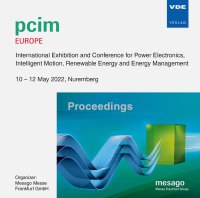Trans-Inductor Voltage Regulator (TLVR): Circuit Operation, Power Magnetic Construction, Efficiency and Cost Trade-Offs
Konferenz: PCIM Europe 2022 - International Exhibition and Conference for Power Electronics, Intelligent Motion, Renewable Energy and Energy Management
10.05.2022 - 12.05.2022 in Nürnberg, Germany
doi:10.30420/565822053
Tagungsband: PCIM Europe 2022
Seiten: 6Sprache: EnglischTyp: PDF
Autoren:
Krishnamurthy, Shreyankh (Pulse Electronics, Germany)
Wiest, David (Pulse Electronics, USA)
Zhou, Yosef (Pulse Electronics, China)
Inhalt:
The Trans-Inductor Voltage Regulator (TLVR) is perhaps the most significant topology development for low-voltage, high-current, multi-phase power solutions in recent years. A wide variety of applications, including datacenters, storage systems, graphics cards and personal computing require a multi-phase architecture to power processors, memory and high current ASICs and FPGAs. In these applications transient response and the ability to tightly control the output voltage during load step is critical and the traditional non-TLVR multi-phase circuit is reaching, or has reached, its ability to keep up with the requirements. The TLVR circuit was published in May/2019 in the TD Commons and proposed replacing the traditional inductors with 1:1 ratio transformers (so called trans-inductors) to dramatically improve transient response and voltage regulation. The TLVR is now being widely implemented in VR14 and related programs. Although the benefits of the topology have been widely reviewed there has been very little investigation, in terms of performance, efficiency, manufacturability and cost, of the actual magnetic components. This paper will briefly review the non-TLVR and TLVR topologies and the magnetic structures and then detail the circuit waveforms, 3D finite element models and specifically examine the trade-offs between the two approaches. An efficiency comparison based on simulation will be presented.


